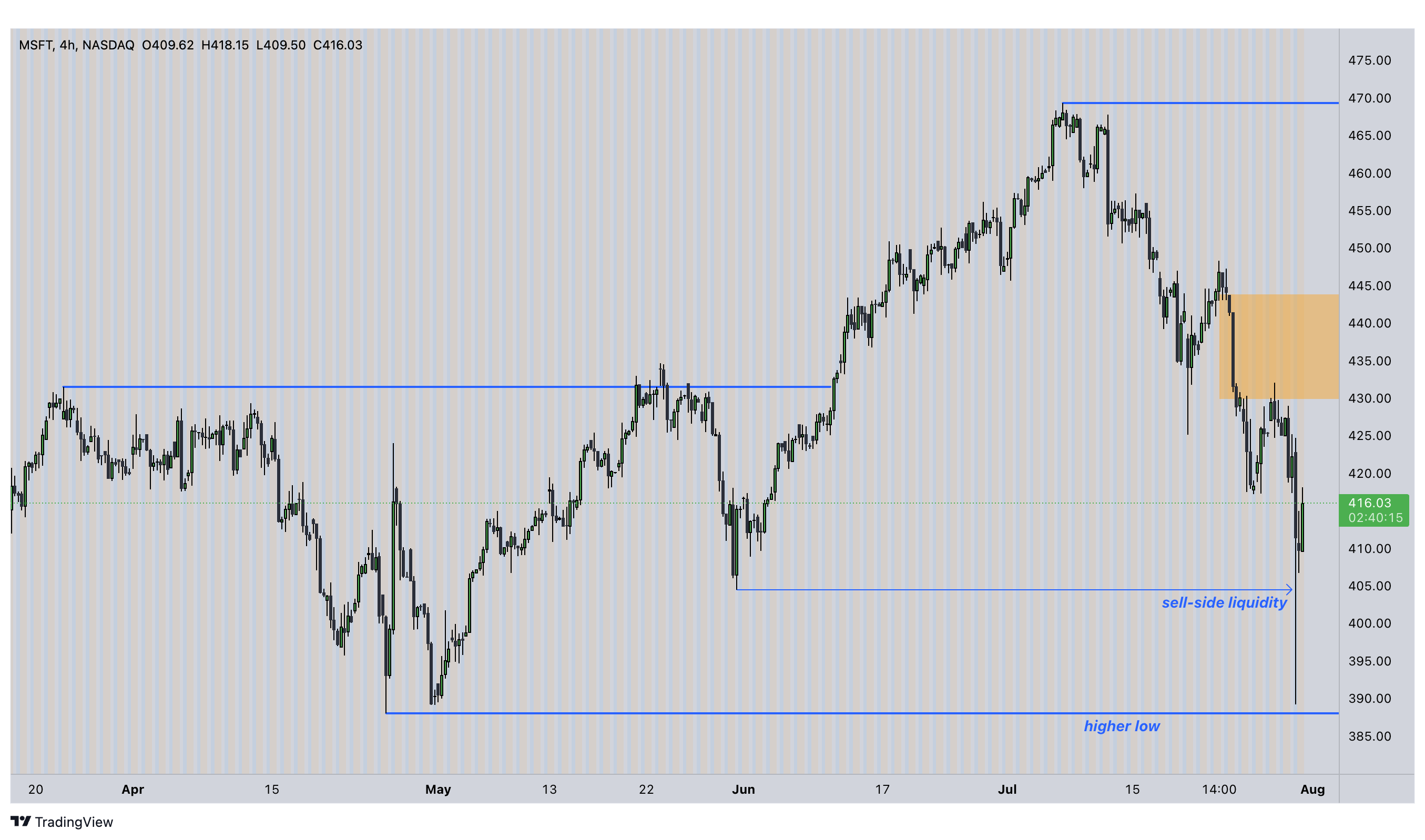Cloud Services segment performance
Not all indicators from the earnings report were positive, however. Microsoft's cloud segment, particularly revenue from the Intelligent Cloud, which includes Azure services, fell slightly short of expectations. The segment reported $28.5 billion in revenue. The company reported a revenue of USD 28.7 billion, compared to expectations of USD 28.7 billion for the same period last year. This may have been partly due to a more than 7%[1] decline in Microsoft shares in after-hours trading.*
Market impact and contribution of artificial intelligence
Despite the downturn in the cloud services segment, Microsoft's overall revenue grew impressively by 21% year-over-year, with Intelligent Cloud revenue growing by 19%. Further, it is noteworthy that AI services contributed 8 percentage points to the growth of Azure and other cloud services, which grew by 29% overall. This is in line with broader market trends where AI capabilities are becoming a key battleground for technology companies.
Investment strategy considerations
Having analyzed these fundamentals for Microsoft, I decided to move on to the technical side, as I consider it an equally important part of analyzing companies. In terms of daily market structures (on the chart, the individual points are shown by blue lines), the price is in a bullish trend. I see the decline after the close of regular trading as, for now, just a liquidity pick needed to pair orders from commercial market participants. To maintain my bullish sentiment, it will be necessary for the price on the daily timeframe not to close below the higher low of this market structure.

Development of Microsoft's share price from the perspective of a four-hour time frame
Conclusion
In conclusion, while the immediate market reaction to Microsoft's results may be negative, the company's core strengths in AI and cloud growth remain strong year-over-year. As an investor, I remain cautiously optimistic and am prepared to take advantage of adjustments that could result from these market moves.
* Past performance is no guarantee of future results.
[1] the development of Microsoft shares over the last five years: https://tradingeconomics.com/msft:us








